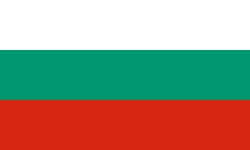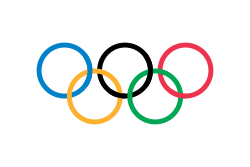Anna Tjitjerova
| Anna Tjitjerova | ||
Anna Tjitjerova vid VM i Daegu 2011. | ||
| Friidrott - Höjdhopp | ||
| Nation: | ||
|---|---|---|
| Guld | London 2012 | Höjdhopp |
| Diskvalificerad | Peking 2008 | Höjdhopp |
| Världsmästerskap | ||
| Guld | Daegu 2011 | Höjdhopp |
| Diskvalificerad | Berlin 2009 | Höjdhopp |
| Silver | Osaka 2007 | Höjdhopp |
| Brons | Moskva 2013 | Höjdhopp |
| Brons | Peking 2015 | Höjdhopp |
| Världsmästerskap inomhus | ||
| Silver | Budapest 2004 | Höjdhopp |
| Silver | Istanbul 2012 | Höjdhopp |
| Brons | Birmingham 2003 | Höjdhopp |
| Europamästerskap inomhus | ||
| Guld | Madrid 2005 | Höjdhopp |
Anna Vladimirovna Tjitjerova, (ryska: Анна Владимировна Чичерова) född 22 juli 1982, Jerevan, Armeniska SSR Sovjetunionen, rysk höjdhoppare med VM-guld 2011 och olympiskt guld i London 2012.
Tjitjerova slog igenom då hon blev fyra vid junior-VM 2000. Hennes första mästerskapsmedalj vann hon vid inomhus-VM 2003 då hon blev trea efter att ha klarat 1,99. Vid VM 2003 i Paris gick hon vidare till final och slutade på sjätte plats efter ett hopp på 1,95. Samma resultat nådde hon vid OS 2004 i Aten. Vid inomhus-VM 2004 blev det en silvermedalj efter landsmannen Jelena Slesarenko. Vid inomhus-EM 2005 vann hon sin första mästerskapstitel när hon tog 2,01. Hon blev fyra vid VM utomhus i Helsingfors.
Tjitjerova blev silvermedaljör vid VM 2007 i Osaka då hon noterade nytt personligt rekord med 2,03 efter Blanka Vlašić. Hon deltog även vid Olympiska sommarspelen 2008 i Peking, där hon blev bronsmedaljör på 2,03. Omtestning 2016 av dopningsprov från OS i Peking 2008 visade att hennes prov innehöll förbjudna medel, och Tjitjerova diskvalificerades och fråntogs bronsmedaljen.[1] Hon diskvalificerades även från världsmästerskapet 2009, där hon tagit en silvermedalj.
Vid VM 2009 i Berlin slutade hon åter på andra plats efter att ha tagit 2,02 meter. Den enda som hoppade högre var Vlašić som klarade 2,04. Hon vann vid VM 2011 i Daegu på 2,03 utan en rivning till och med den höjden och vann guld på 2,05 vid OS i London 2012. Tjitjerova hoppade 2,07 i ryska mästerskapen 2011. Bara två kvinnor har någonsin hoppat högre utomhus. Blanka Vlasic med 2,08 och världsrekordhållerskan Stefka Kostadinova med sina 2,09.
I juni 2021 meddelade hon att hon lagt ned sin friidrottskarriär.[2]
Personliga rekord
- 2,07 utomhus
- 2,04 inomhus
Källor
- ^ ”IOC sanctions Anna Chicherova for failing anti-doping test at Beijing 2008” (på engelska). IOK. 6 oktober 2016. https://olympics.com/ioc/news/ioc-sanctions-anna-chicherova-for-failing-anti-doping-test-at-beijing-2008. Läst 28 juni 2021.
- ^ ”Ryska OS-guldmedaljören avslutar karriären”. SvT Sport. 27 juni 2021. https://www.svt.se/sport/friidrott/ryska-os-guldmedaljoren-avslutar-karriaren. Läst 28 juni 2021.
| |||||
| |||||||||||||
Media som används på denna webbplats
De olympiska ringarna, med genomskinlig bakgrund.
Författare/Upphovsman: Gutten på Hemsen, Licens: CC0
Flag of Norway with colors from the previous version on Commons. This file is used to discuss the colors of the Norwegian flag.
Färg som används: National flag | South African Government and Pantone Color Picker
| grön | rendered as RGB 0 119 73 | Pantone 3415 C |
| gul | rendered as RGB 255 184 28 | Pantone 1235 C |
| röd | rendered as RGB 224 60 49 | Pantone 179 C |
| blå | rendered as RGB 0 20 137 | Pantone Reflex Blue C |
| vit | rendered as RGB 255 255 255 | |
| svart | rendered as RGB 0 0 0 |
Det är enkelt att lägga till en ram runt den här bilden
The Canadian Red Ensign used between 1921 and 1957.
This image has compared for accuracy (mainly colors) using an image from World Statesmen. The only change is making the maple leaves green from red. This image has compared for accuracy (mainly colors) using an image from World Statesmen. The most recent version of this image has changed the harp into one with a female figure; see [http://flagspot.net/flags/ca-1921.html FOTW
The Canadian Red Ensign used between 1921 and 1957.
This image has compared for accuracy (mainly colors) using an image from World Statesmen. The only change is making the maple leaves green from red. This image has compared for accuracy (mainly colors) using an image from World Statesmen. The most recent version of this image has changed the harp into one with a female figure; see [http://flagspot.net/flags/ca-1921.html FOTW
US Flag with 48 stars. In use for 47 years from July 4, 1912, to July 3, 1959.
Flag of Hungary from 6 November 1915 to 29 November 1918 and from August 1919 until mid/late 1946.
Flag of South Africa, used between 1928 and 1982. It is identical to the 1982 to 1994 version except that the shade of blue is darker. It is also known as the "Oranje-Blanje-Blou".
Olympic Movement flag
Proportions 2:3, created 1913, adopted 1914, first used 1920.
- Colors as per http://fairspielen.de/wp-content/uploads/2015/09/Annexe-3-Olympism_and_the_Olympic_Symbol_-_Principles_and_Usages_Guide-1.pdf
- blue: PMS 3005C
- yellow: PMS 137C
- black: PMS 426C
- green: PMS 355C
- red: PMS 192C
- Dimensions of the rings taken from http://fairspielen.de/wp-content/uploads/2015/09/Annexe-3-Olympism_and_the_Olympic_Symbol_-_Principles_and_Usages_Guide-1.pdf
The civil ensign and flag of Belgium. It is identical to Image:Flag of Belgium.svg except that it has a 2:3 ratio, instead of 13:15.
Flag of Romania (28 March 1948 - 24 September 1952)

Construction sheet of the Flag of Romania as depicted in Decree nr. 972 from 5 November 1968.
- l = 2/3 × L
- C = 1/3 × L
- S = 2/5 × l
Författare/Upphovsman: Erik van Leeuwen, attribution: Erik van Leeuwen (bron: Wikipedia)., Licens: CC BY-SA 3.0
Anna Chicherova during 2011 World championships Athletics in Daegu
Provisional flag for the Authorised Neutral Athletes (ANA) team at the IAAF events; since 2017.

























